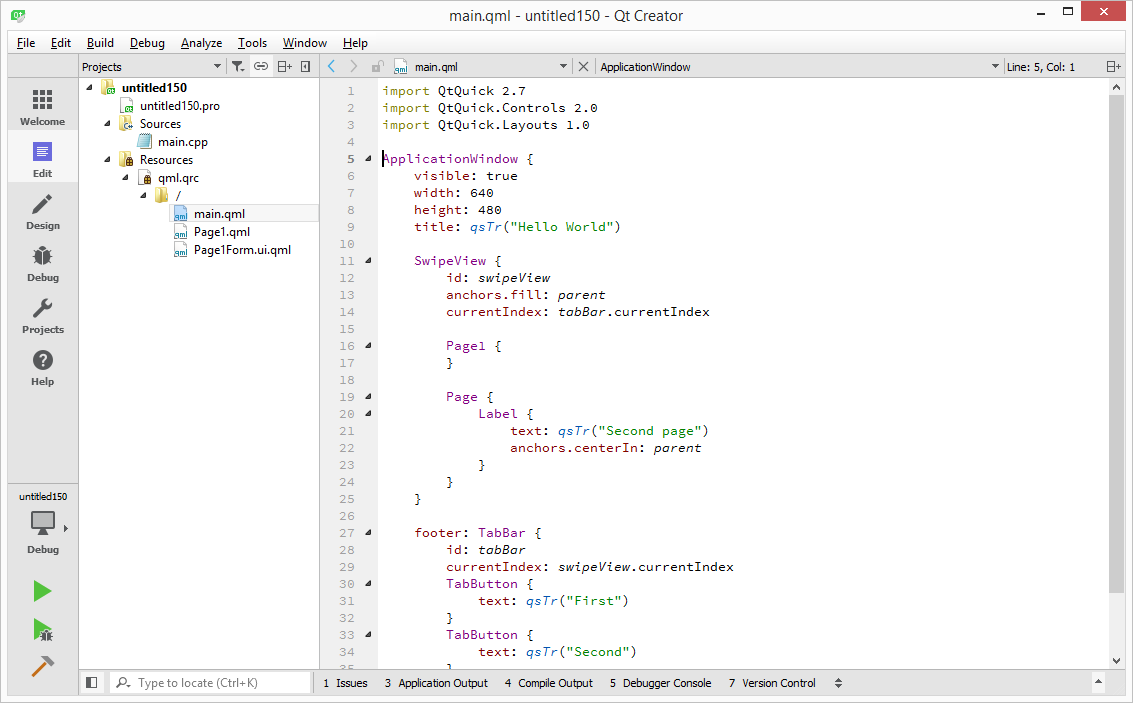

ui files directly and load their content to generate the associated GUI. Then you can use this Python code in your GUI applications. ui files into Python code with pyuic5, which is a command-line tool that comes with PyQt.
#Using qt creator how to#
These files are XML files with detailed descriptions of how to generate Qt-based GUIs. It doesn’t produce code in any particular programming language, but it creates. Qt Designer is platform and programming language independent. Qt Designer also allows you to preview your GUIs using different styles and resolutions, connect signals and slots, create menus and toolbars, and more. After that, you can arrange them into a coherent GUI using different layout managers. With this tool, you create GUIs by dragging and dropping QWidget objects on an empty form. Qt Designer is a Qt tool that provides you with a what-you-see-is-what-you-get (WYSIWYG) user interface to create GUIs for your PyQt applications productively and efficiently. Get the Source Code: Click here to get the source code you’ll use to learn about creating Python GUI applications with Qt Designer in this tutorial. You can get the code and all the required resources to build this application by clicking the link below: You’ll put all this knowledge together by using the GUIs that you’ll build with Qt Designer in a sample text editor application.

Python and PyQt: Creating Menus, Toolbars, and Status Bars.Python and PyQt: Building a GUI Desktop Calculator.ui files in your GUI applicationsįor a better understanding of the topics in this tutorial, you can check out the following resources: How to create and lay out the GUI of your dialogs with Qt Designer.How to build and lay out the GUI of an application’s main window using Qt Designer.When to use Qt Designer vs hand coding for building your GUIs.
#Using qt creator install#


 0 kommentar(er)
0 kommentar(er)
